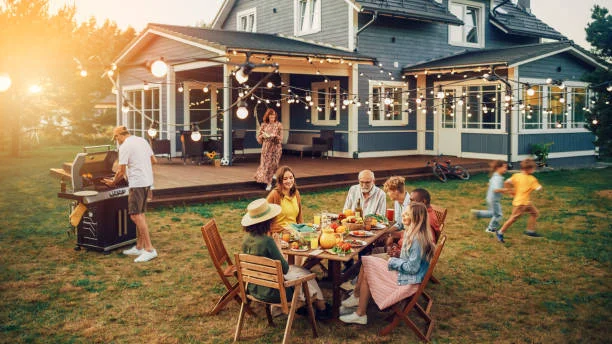Relearning how to connect with people as an adult can feel like staring at a gym membership brochure in January. You want the results, but you’re not signing up for anything that feels like punishment. For many, the past few years shrank our social circles down to the size of a dinner plate or Rebuild Your Social Life, and rebuilding them now has less to do with checking boxes and more to do with finding rhythms that actually fit into daily life. Nobody wants a step-by-step “social makeover.” What people are craving is a gentler, more realistic way to step back into the current of shared experiences without the artificial pressure to be “on” all the time.
Ready to learn more? Our website is your next step toward clarity.
Shifting From Performance To Presence
A lot of the hesitancy adults feel around socializing comes from the old sense that being in a group means performing. At school or in early jobs, your value often felt tied to how funny, interesting, or entertaining you could be. That mindset leaves people convinced they need to put on a show, and honestly, it’s exhausting. The truth is that most of us now prefer people who feel grounded rather than dazzling. Learning to be present instead of performing takes practice, but it begins with small adjustments. Allowing pauses in conversation, resisting the urge to fill every silence with chatter, and showing up in an ordinary mood rather than an optimized one can actually draw people closer. It’s easier to trust someone who isn’t trying too hard.
This shift also means realizing that presence doesn’t require constant availability. It’s more about quality than frequency. Meeting a friend once a month and really listening may strengthen your bond more than five rushed coffees where you’re half-checking your phone. When socializing feels less like an obligation and more like an invitation, your energy starts to shift. You’re not just showing up, you’re actually there.
Letting Curiosity Lead Instead Of Small Talk
One reason socializing can feel draining is the endless loop of weather, work, and weekend updates. Small talk has its place, but leaning on it exclusively makes everything feel disposable. The alternative isn’t dramatic storytelling, it’s curiosity. People light up when asked about something they care about, even if it’s a niche hobby or a project that sounds trivial to outsiders. Ask about the new bread recipe they tried or the reason they chose their dog’s name, and suddenly the whole energy changes.
Curiosity works in both directions. By asking questions, you naturally learn to share more about yourself too, because it’s less about reciting facts and more about swapping perspectives. The exchange feels mutual rather than like a job interview. This approach turns ordinary encounters—like chatting with the neighbor while hauling groceries—into little sparks of connection that build over time. It’s how acquaintances shift toward friendship, not because you forced it but because you paid attention.
Using The Internet As A Bridge, Not A Crutch
It’s easy to view technology as the villain of modern loneliness, but it can also be a powerful tool for reconnection if used with intention. That old temptation to scroll endlessly through updates leaves most people feeling more detached, not less. But if you use digital platforms to directly reach out, they become a bridge back into real life. Something as simple as searching to find your high school yearbooks online can be the spark that leads you to reconnect with someone you haven’t spoken to in decades. That search isn’t about nostalgia alone, it’s a starting point for conversation that carries weight.
Group chats, local community boards, and even hobby-specific forums can be surprisingly effective if you’re willing to go one step further and move from the digital space into the physical one. The goal isn’t to substitute likes for laughter but to use those tools to create real invitations. You can stumble across a trivia night because a local group posted about it, or notice an acquaintance posting pictures of the same hiking trail you love and suggest going together. Technology becomes less about passive scrolling and more about active outreach, which makes all the difference.
Redefining What Friendship Looks Like Now
The idea of friendship tends to get stuck in the high school or college mold, where people saw each other daily, swapped secrets late at night, and shared everything from rides to meals. Adult life is different, and clinging to that old standard makes many feel like they’re constantly falling short. Realistic adult friendships look nothing like teenage ones, and that’s not a loss—it’s a shift.
Instead of expecting daily updates, most adult friendships thrive on touch points that fit the rhythm of work, kids, and responsibilities. A quick text to check in, a planned dinner every few months, or even ongoing shared projects can carry just as much depth as the all-day hangouts of younger years. What matters is consistency, not frequency. When you recognize that the measure of friendship is less about constant access and more about mutual care, the pressure lifts. You stop feeling guilty for the weeks that pass and focus instead on the fact that you always pick up right where you left off.
This redefinition also helps you welcome different kinds of friends into your life. Some may be your travel companions, others the ones who help you through work stress, and a few who remain mostly in your digital orbit but still matter. By embracing variety, you give yourself permission to stop chasing the one-size-fits-all friendship that rarely exists in adulthood.
Saying Yes Without Overcommitting
Part of rebuilding a social life involves recalibrating your default response. For many, the automatic answer has become “maybe later” or “I’m too busy,” even when part of them would enjoy the event. Shifting toward more YES can unlock opportunities, but that doesn’t mean throwing your calendar into chaos. It means trying the low-stakes options first. Accept an invitation to a neighbor’s barbecue, show up at the community book fair, or join a coworker for an after-work drink even if you only stay for thirty minutes.
What usually happens is that the anticipation feels heavier than the actual experience. Once you’re there, the casual atmosphere reminds you how good it feels to be among people again. That small yes can then snowball into a larger comfort zone. But saying yes selectively is the key—you’re not obligated to attend every gathering, only the ones that feel like they’ll add energy rather than drain it. In time, those choices carve out a healthy balance between solitude and social connection.
Building Social Habits Into Daily Routines
The hardest part about becoming more social often isn’t the big event, it’s the everyday inertia. If your routine doesn’t have built-in points of contact, you’ll default to isolation without even realizing it. That’s why small, repeatable habits are so effective. Walking at the same time each morning means you cross paths with neighbors. Visiting the same café a few times a week lets the barista become a familiar face, and those interactions are the building blocks of a larger network.
Consistency creates recognition, and recognition fosters trust. Over time, the person who nodded at you in passing becomes someone you chat with, and eventually maybe even invite over. These micro-connections matter because they weave a sense of community into ordinary days. You don’t have to rearrange your life to attend events constantly; you simply have to lean into the opportunities your current schedule already presents.
Letting Yourself Be A Beginner Again
Adults hate being beginners, but when it comes to social life, that’s exactly where most people have to start. Trying something new—whether it’s a pottery class, a volunteer role, or a recreational sports league—places you in a group of other beginners, which levels the field. Nobody expects you to be an expert; they just expect you to be willing. This mindset diffuses a lot of the anxiety that holds people back from joining.
The bonus is that beginner environments tend to foster a sense of camaraderie because everyone is slightly out of their element. Jokes about failed attempts and awkward introductions turn into bonding experiences. By framing yourself as a learner rather than someone who has to prove social mastery, you give yourself space to grow. That growth spills into the rest of your social life, making it easier to initiate conversations and accept invitations without feeling like you’re falling behind some invisible standard.
Wrapping Up
Rebuilding a social life or Rebuild Your Social Life doesn’t happen through sudden transformations. It’s more like tending a fire: a few small sparks, consistently nurtured, become something that warms the whole room. By focusing on presence instead of performance, letting curiosity guide conversations, using technology as a tool rather than a trap, and welcoming the imperfect rhythms of adult friendships, you create a version of connection that fits your real life. Momentum is what matters most, and once it starts rolling, it often carries you further than you expected.
Fuel your mind—find detailed resources and wisdom on 2A Magazine.







